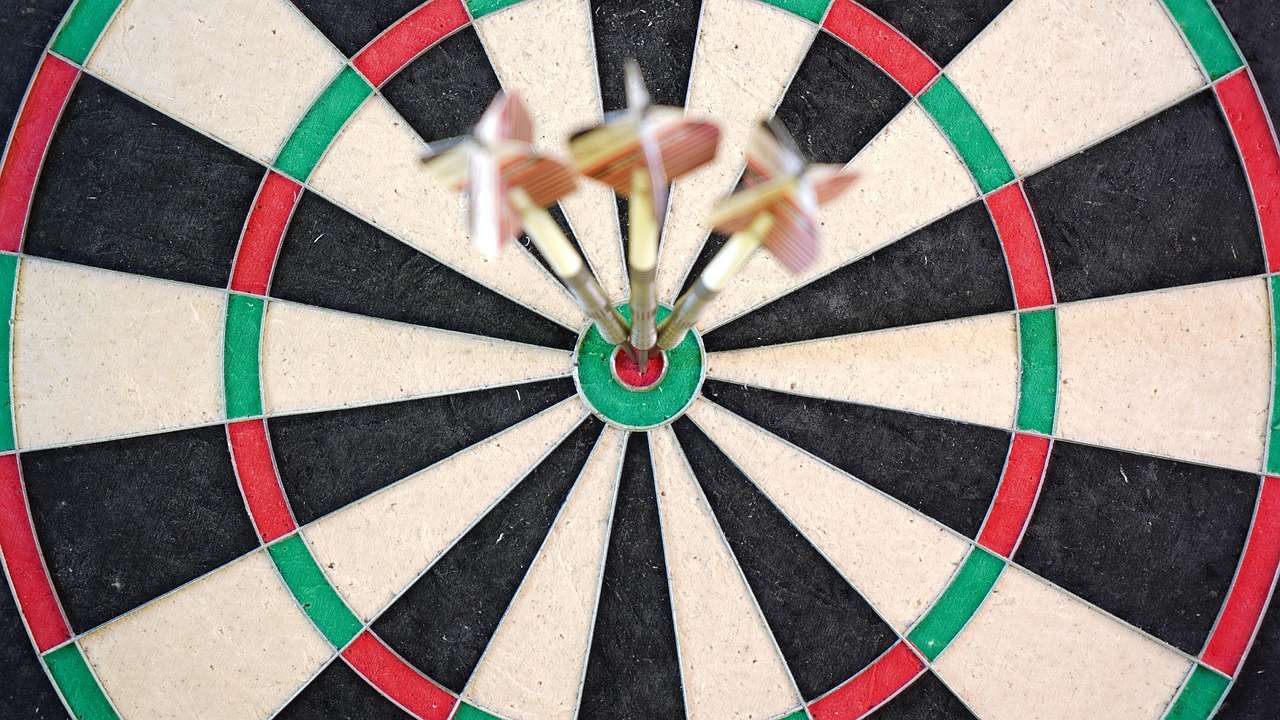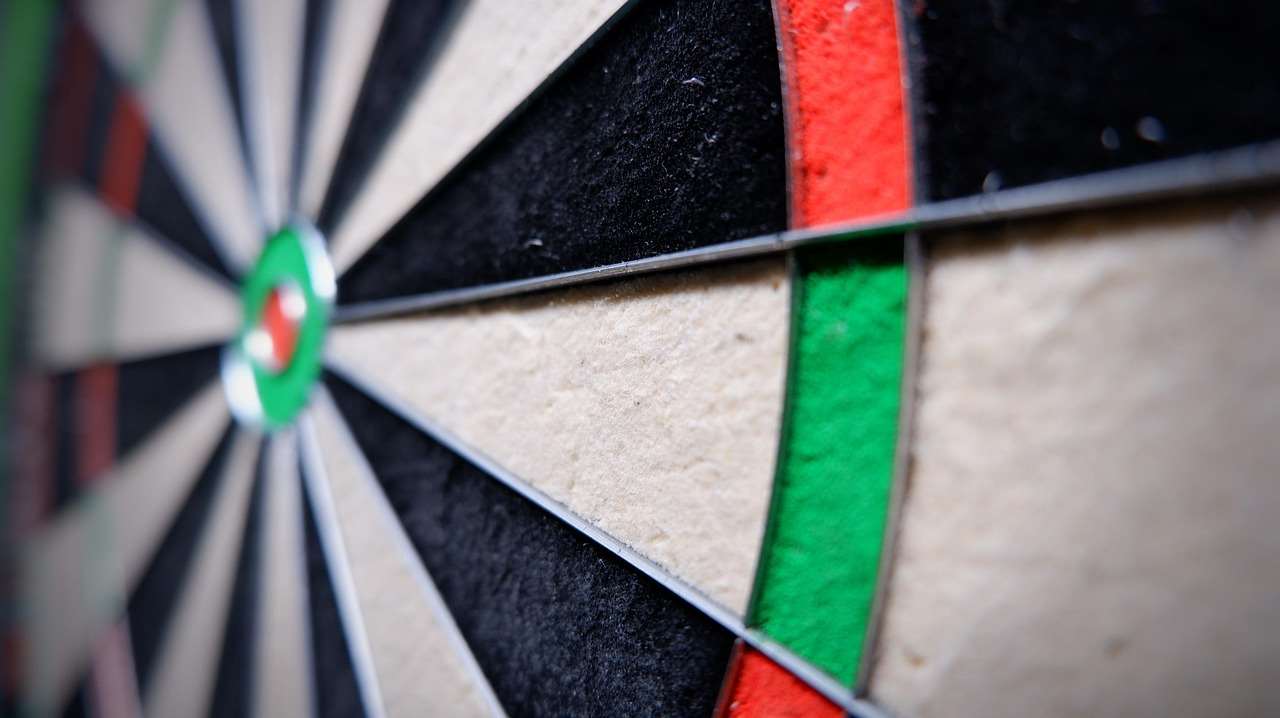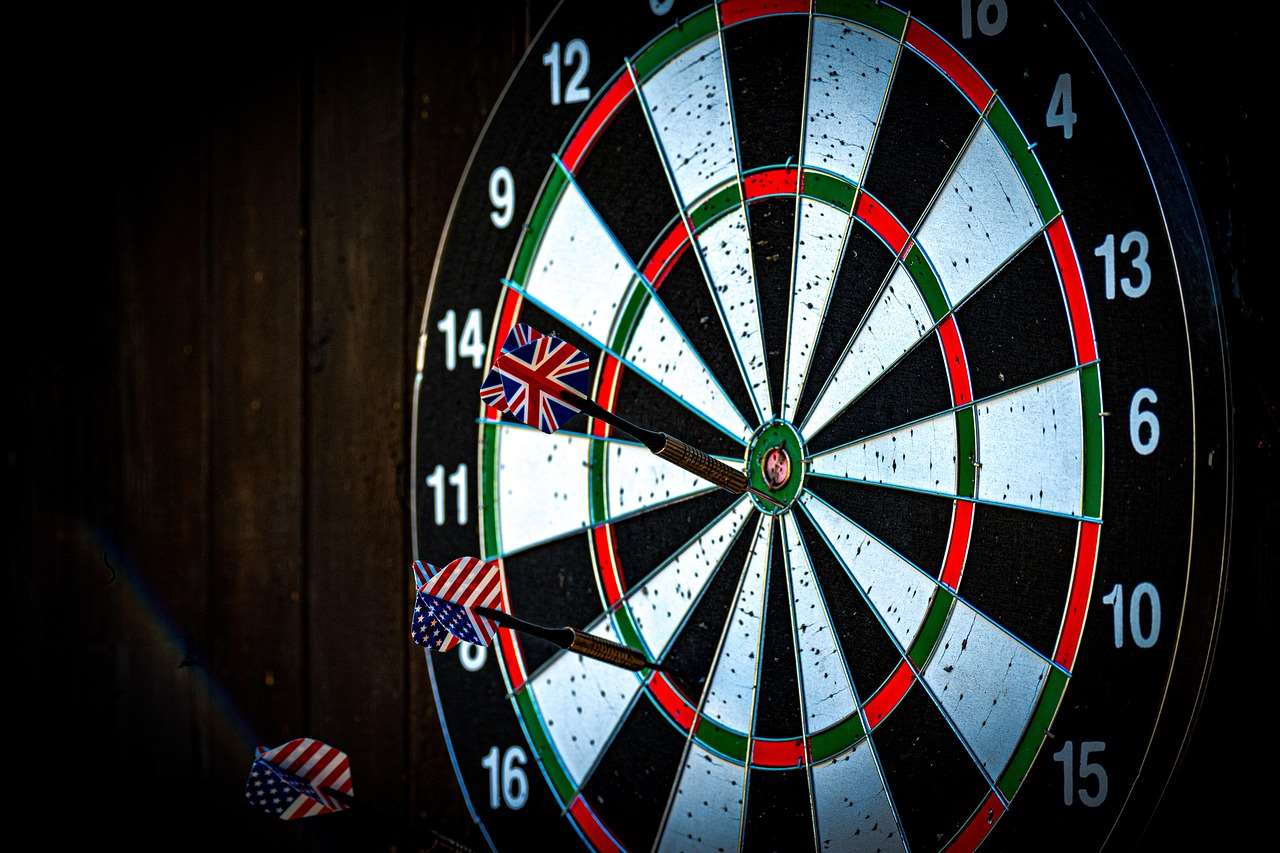Replacing your dart points is essential for maintaining optimal dart performance and ensuring they stick in the board. This article provides a comprehensive guide to dart point replacement, covering everything from identifying when a replacement is needed to the step-by-step process and the different types of points available. You’ll also learn about the tools required and get valuable tips for extending the life of your dart points.
⚠️ Still Using Pen & Paper (or a Chalkboard)?! ⚠️
Step into the future! The Dart Counter App handles all the scoring, suggests checkouts, and tracks your stats automatically. It's easier than you think!
Try the Smart Dart Counter App FREE!Ready for an upgrade? Click above!
When to Consider Dart Point Replacement
Knowing when to replace your dart points is crucial for consistent play. Several factors indicate that it’s time for a change. A primary indicator is visible wear and tear. Look for burrs, bends, or excessive dullness at the tip of the point. These imperfections can cause bounce-outs, damage your dartboard, and affect your overall accuracy.
- Excessive Bounce-Outs: If your darts are frequently bouncing out of the board, even when thrown with good technique, your points might be the culprit.
- Visible Damage: Check for bent, broken, or significantly worn points.
- Dullness: Over time, points lose their sharpness, impacting their ability to grip the dartboard fibers.
- Difficulty Inserting: If you find it increasingly difficult to push your darts into the board, the points may be damaged or blunted.
Regular inspection of your dart points will help you identify these issues early, allowing you to maintain peak performance and prevent damage to your board. Don’t ignore these warning signs; proactive dart point replacement will save you frustration and money in the long run.

Tools Needed for Dart Point Replacement
The process of dart point replacement requires a few specialized tools. Having the right equipment on hand will make the process smoother and more efficient.
- Dart Point Removal Tool: This tool is designed to safely and effectively remove old points without damaging the dart barrel. Several types are available, including grip-style pullers and lever-action tools.
- Dart Point Press or Insertion Tool: This tool ensures that new points are inserted straight and securely into the dart barrel. It provides leverage and control, preventing damage during insertion.
- Soft-Tip Conversion Tool (Optional): If you’re switching between steel and soft tips, a conversion tool can be helpful.
- Hammer (Optional): Some point presses may require a hammer for added force, especially when installing particularly tight-fitting points. A rubber or nylon hammer is recommended to avoid damaging the tool or the dart barrel.
- Protective Cloth or Vice: To protect the dart barrel from scratches during the replacement process, use a cloth or vice to secure it.
Investing in quality tools specifically designed for dart point replacement will make the task easier and reduce the risk of damaging your darts. Trying to use makeshift tools can lead to frustration and potential damage, so it’s worth acquiring the correct equipment.
Step-by-Step Guide to Dart Point Replacement
Dart point replacement can seem daunting at first, but with the right tools and a little patience, it’s a straightforward process. Follow these steps for a successful point replacement:
- Preparation: Gather your tools and the new dart points. Secure the dart barrel in a protective cloth or vice to prevent scratches.
- Point Removal: Using the dart point removal tool, grip the old point firmly. Depending on the tool, you may need to twist and pull or use a lever action to extract the point. Apply steady pressure, avoiding sudden jerks that could damage the barrel.
- Barrel Inspection: Once the old point is removed, inspect the barrel for any damage or debris. Clean the inside of the point socket with a small brush or cotton swab.
- Point Insertion: Place the new dart point into the point press or insertion tool. Align the point straight with the barrel socket.
- Secure the Point: Apply even pressure to the point press until the new point is fully seated in the barrel. If using a hammer, tap gently and evenly to avoid bending the point.
- Final Inspection: Check that the new point is straight and secure. Ensure there are no gaps between the point and the barrel.
- Repeat: Repeat the process for the remaining darts.
Taking your time and following these steps carefully will ensure a successful dart point replacement. If you encounter resistance or difficulty, double-check your alignment and use steady pressure. Avoid forcing anything, as this could damage your darts.

Types of Dart Points Available
Choosing the right type of dart points is essential for optimizing your dart performance. Several options are available, each with its own characteristics and benefits. Understanding these differences will help you select the best points for your throwing style and dartboard.
- Standard Steel Points: These are the most common type of dart points and are suitable for most dartboards. They offer a good balance of grip and durability.
- Grooved Points: These points have grooves or ridges along their surface, providing enhanced grip in the dartboard. They are a good choice for players who want extra security and reduced bounce-outs.
- Smooth Points: Smooth points are designed for minimal resistance when entering the dartboard. They are preferred by some players for their smooth feel and consistent release.
- Conversion Points: These points allow you to convert soft-tip darts for use on steel-tip dartboards. They are typically longer and heavier than standard steel points.
- Specialty Points: Some manufacturers offer specialty points with unique designs or coatings. These may include points with improved grip, reduced bounce-outs, or enhanced durability.
When selecting dart points, consider your throwing style, the type of dartboard you use, and your personal preferences. Experiment with different types to find the ones that provide the best performance and feel for you. You can also check out darts barrel styles to find what best suits your playing style. Don’t be afraid to try different lengths as well, as the length can affect dart trajectory.
Tips for Extending the Life of Your Dart Points
Proper care and maintenance can significantly extend the life of your dart points and ensure consistent performance. Here are some tips to help you keep your points in top condition:
- Regular Sharpening: Use a dart point sharpener to maintain the sharpness of your points. A sharp point will grip the dartboard fibers more effectively, reducing bounce-outs.
- Cleaning: Regularly clean your dart points with a cloth or brush to remove dirt, dust, and debris. This will help maintain their grip and prevent damage to the dartboard.
- Avoid Hard Surfaces: Be careful not to drop your darts on hard surfaces, as this can bend or damage the points. Use a dart case to protect your darts when not in use.
- Rotate Your Darts: Rotate your darts regularly to distribute wear evenly across all three. This will help prevent one dart from becoming excessively worn compared to the others.
- Use a Dartboard Surround: A dartboard surround will protect your walls from stray darts and reduce the chance of your darts hitting hard surfaces.
By following these tips, you can prolong the life of your dart points, saving you money and ensuring consistent performance. Proper maintenance is an investment in your darts and your game.

Troubleshooting Common Issues During Dart Point Replacement
Even with the right tools and techniques, you may encounter some challenges during dart point replacement. Here are some common issues and how to troubleshoot them:
- Point Stuck or Difficult to Remove: If a point is stuck, try applying penetrating oil or lubricant to the joint between the point and the barrel. Let it sit for a few minutes before attempting to remove the point again. You may also need to use a more robust point removal tool.
- New Point Won’t Insert Fully: If a new point won’t insert fully, ensure that the barrel socket is clean and free of debris. Check the point for any burrs or imperfections. You may also need to use a point press with more leverage or a hammer for added force.
- Point Bends During Insertion: If a point bends during insertion, stop immediately. This indicates that the point is not aligned properly or that you are applying too much force. Realign the point and try again, using even pressure.
- Barrel Damage: If you accidentally damage the dart barrel during the replacement process, you may need to consult a professional dart repair service. In some cases, the barrel may need to be replaced.
Patience and careful attention to detail are key to avoiding these issues. If you encounter significant resistance or difficulty, don’t force anything. Seek assistance from a more experienced dart player or a professional repair service.
The Impact of Dart Point Quality on Your Game
The quality of your dart points can significantly impact your game. High-quality points are more durable, offer better grip, and provide a more consistent release. Investing in good points can lead to improved accuracy, reduced bounce-outs, and greater overall confidence.
Consider the material, design, and construction of the points when making your selection. Look for points made from durable materials like hardened steel or tungsten. Choose a design that suits your throwing style and preferences. Read reviews and seek recommendations from other dart players to find points that are known for their quality and performance. Remember, taking care of your equipment is just as important as your skill level, and it might be worth checking out what dartboard do pros use to get insight in to the kind of equipment the experts are using.
While cheaper points may seem appealing, they often lack the durability and performance of higher-quality options. Investing in good points is a worthwhile investment in your game.
Alternative to Replacing Dart Points: Point Sharpening
While dart point replacement is sometimes necessary, regular **point sharpening** can often extend the life of your current points and maintain optimal performance. A dull dart point is much more likely to cause bounce-outs and can even damage your dartboard over time.
A **dart sharpener** is a small, inexpensive tool designed specifically to restore the sharpness of your dart points. They typically feature a series of small sharpening stones or grooves that gently file the point back to its original shape. When sharpening, always follow the manufacturer’s instructions and use a light touch. Over-sharpening can actually weaken the point and make it more prone to breakage. It’s better to sharpen frequently and gently than to try and restore a severely dull point all at once. Also, ensure you keep Best darts scoring app updated to keep track of your scores!
In addition to using a dart sharpener, you can also use a fine-grit sandpaper or emery board to smooth out any burrs or imperfections on your dart points. This can help improve their grip and reduce the likelihood of bounce-outs. Regularly inspecting and maintaining your dart points, including sharpening and smoothing, can significantly extend their lifespan and keep them performing at their best.

Choosing the Right Dart Point Length
The length of your dart points can also affect your dart’s trajectory and stability. While personal preference plays a role, there are some general guidelines to consider when choosing the right length. Longer points tend to provide more stability in the air, which can be beneficial for players who have a more erratic throwing motion. They can also help to reduce bounce-outs, as they have more surface area to grip the dartboard fibers.
Shorter points, on the other hand, can be more aerodynamic and may result in a slightly faster dart speed. They can also be easier to remove from the dartboard, especially if you tend to group your darts closely together. Ultimately, the best dart point length for you will depend on your individual throwing style and preferences. It’s worth experimenting with different lengths to see what feels most comfortable and provides the best results.
Consider factors like your grip, release, and the distance you stand from the dartboard when making your decision. A longer point may be beneficial if you tend to release the dart with a higher arc, while a shorter point may be better suited for a flatter trajectory.
Understanding Dart Point Materials: Steel vs. Conversion
When discussing dart point replacement, you’ll encounter mainly two materials: steel (for steel-tip darts) and conversion points (which adapt soft-tip darts for use on steel-tip boards). Steel points are the standard for traditional dartboards, offering excellent grip and durability. They come in various styles (grooved, smooth, etc.) to cater to different player preferences.
Conversion points are designed for players who primarily use soft-tip darts but occasionally want to play on steel-tip boards. These points are typically longer and may have different weighting to compensate for the lighter weight of soft-tip darts. While convenient, conversion points may not provide the same level of performance as dedicated steel points due to differences in balance and aerodynamics. If you frequently switch between soft-tip and steel-tip boards, consider having separate sets of darts for each, ensuring optimal performance on both. You could even discuss the darts with darts hype moments with your friends while you are at it.

Conclusion
Dart point replacement is a crucial aspect of maintaining your darts and ensuring optimal performance. By understanding when to replace your points, having the right tools, and following the proper steps, you can keep your darts in top condition and enjoy consistent results. Remember to choose the right type of points for your throwing style and dartboard, and to take care of your points through regular cleaning and sharpening. Neglecting your dart points can lead to frustration and inconsistent performance, so prioritize dart point replacement as part of your regular dart maintenance routine. Now that you have learned all about dart point replacement, go ahead and get started!
Hi, I’m Dieter, and I created Dartcounter (Dartcounterapp.com). My motivation wasn’t being a darts expert – quite the opposite! When I first started playing, I loved the game but found keeping accurate scores and tracking stats difficult and distracting.
I figured I couldn’t be the only one struggling with this. So, I decided to build a solution: an easy-to-use application that everyone, no matter their experience level, could use to manage scoring effortlessly.
My goal for Dartcounter was simple: let the app handle the numbers – the scoring, the averages, the stats, even checkout suggestions – so players could focus purely on their throw and enjoying the game. It began as a way to solve my own beginner’s problem, and I’m thrilled it has grown into a helpful tool for the wider darts community.